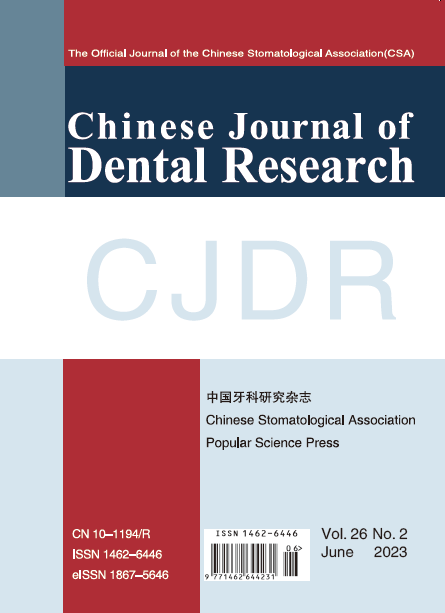|
Objective: To estimate the mean prevalence of periodontal pathology of adjacent second molars (A-M2s) to third molars (M3s) and identify related confounding factors. Methods: Studies published before August 2020 were systematically searched in the Cochrane Library, EMBASE and MEDLINE databases. We included cross-sectional studies that evaluated the periodontal pathology of A-M2s based on clinical or radiographic examinations at the molar level. Studies employing similar periodontal parameters were pooled. Clinical attachment loss ≥ 3 mm, alveolar bone loss ≥ 3 mm or ≥ 20% root length were defined as early periodontal defects, and at least one site with probing depth ≥ 5 mm was considered as deep periodontal pockets around A-M2s in the data synthesis. Results: Nine studies (14,749 M3s) were ultimately included in the meta-analysis. On average, 19% of A-M2s showed distal early periodontal defects with the presence of M3s (95% confidence interval [95% CI] 9%–35%). Subgroup analyses suggested the prevalence was 32% (95% CI 16%–54%) in the mandible, and the prevalence was higher with nonimpacted M3s (25%, 95% CI 12%–47%) than with impacted M3s (19%, 95% CI 10%–35%). Additionally, the pooled prevalence for deep periodontal pockets around A-M2s was 52% (95% CI 39%–64%). Subgroup analyses suggested the prevalence was higher in the mandible (62%, 95% CI 45%–76%) than in the maxilla (43%, 95% CI 31%–56%), and for nonimpacted M3s the prevalence reached 50% (95% CI 36%–64%). Conclusion: The presence of M3s, especially mandibular and nonimpacted M3s, negatively affects the periodontal status of A-M2s. Key words: meta-analysis, periodontal pathology, prevalence, second molars, third molars (editor:CJDR) |
- Chin J Dent Res
CN 10-1194/R . ISSN 1462-6446 . eISSN 1867-5646 . Quarterly 



